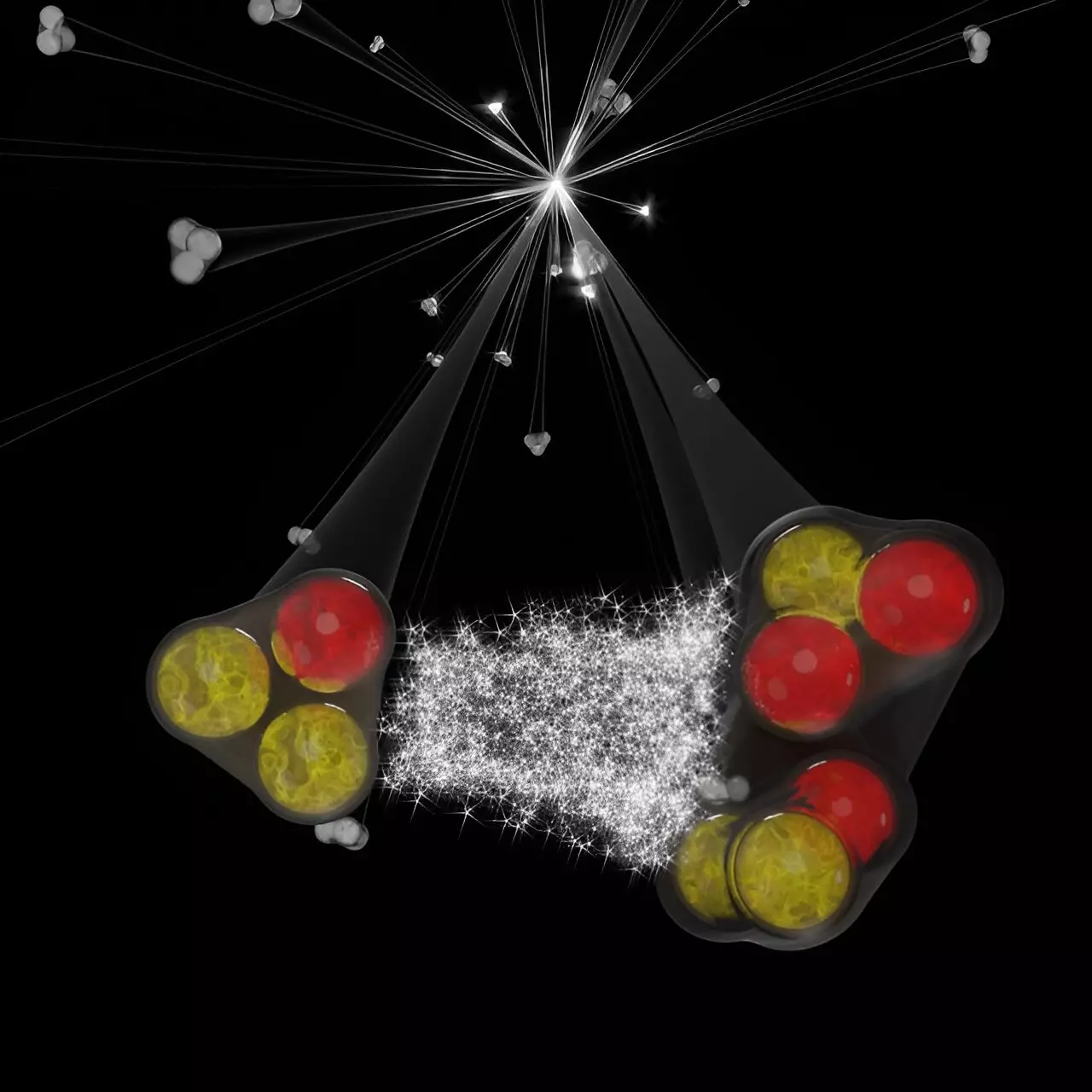The study of fundamental forces in nuclear physics has undergone significant advancements, particularly with the recent findings presented by the ALICE collaboration in the journal *Physical Review X*. Their research delves into the behaviors of kaon-deuteron and proton-deuteron systems, thereby enhancing our understanding of three-body interactions—complex arrangements that extend beyond the conventional understanding of forces acting solely between two entities. This exploration is crucial for grasping the intricate structure of atomic nuclei and the dynamics of high-density nuclear matter, which also sheds light on the enigmatic cores of neutron stars.
Traditionally, fundamental forces are characterized as interactions between pairs of particles. However, when expanding this framework to comprehend three-body interactions, the complexity multiplies. The interactions among three hadrons, or particles, can reveal not only the nature of these forces but also their implications in observable phenomena. For instance, in proton-proton collisions at the Large Hadron Collider (LHC), particles are frequently emitted in close proximity—down to femtometer scales (10^-15 m). Researchers ponder whether these nearby particles influence one another before dispersing, creating an immediate question: Can we discern how these interactions manifest before the particles fully separate?
One key to understanding these intricate interactions lies in measuring correlations between produced particles. The ALICE collaboration has utilized its advanced particle identification capabilities to assess correlations in high-multiplicity proton-proton collisions, specifically at a center-of-mass energy of 13 TeV. By evaluating the correlation function—a statistical measure indicating how particle pairs behave in relation to one another—the researchers can identify whether particle interactions are generally attractive or repulsive. A correlation function yielding a value greater than one signifies an attractive interaction, whereas a value less than one showcases repulsion.
In their analysis, the ALICE collaboration found that the correlation functions for kaon-deuteron and proton-deuteron systems exhibit values below unity for low relative transverse momenta, implying a fundamental repulsive interaction at close distances. Specifically, the research indicated that kaons and deuterons tend to be produced within a minimal spatial separation of approximately 2 femtometers. Notably, while the kaon-deuteron interactions could be explained using an effective two-body model accounting for Coulomb and strong forces, the proton-deuteron interactions necessitated a more sophisticated approach. A complete three-body calculation, factoring in the structure of the deuteron itself, was foundational for accurate descriptions of these interactions.
The results from this research not only underscore the need for thorough understanding of two- and three-body strong interactions but also illuminate new methodologies for analyzing three-body systems within high-energy collider environments such as the LHC. Such innovative correlation measurement techniques promise to yield fresh insights into the short-range dynamics prevalent in three-nucleon systems. This approach opens doors for investigating other hadronic particles, particularly those within strange and charm sectors, which have remained largely inaccessible to experimental inquiry.
As the ALICE collaboration prepares to implement similar methodologies during LHC Runs 3 and 4, the implications of their findings are extensive. These studies not only deepen our comprehension of nuclear interactions but also set a precedent for broader investigations into the nature of hadrons and their interrelationships. The future of nuclear physics appears poised for exploration at the frontier of complexity, addressing questions that could redefine our understanding of matter at the most fundamental levels. As researchers continue to unravel these connections, the knowledge gleaned from three-body systems could significantly impact not only theoretical models but also our grasp of the universe’s fabric.

